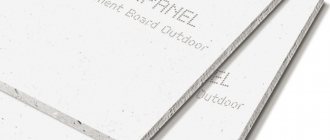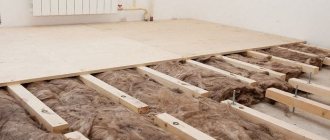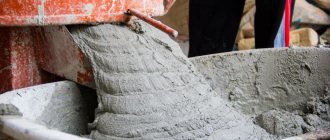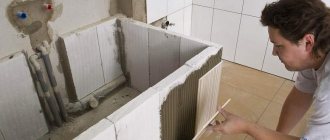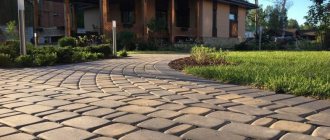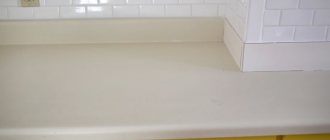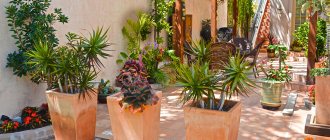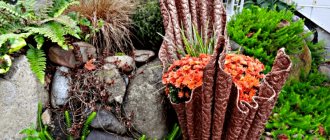To obtain a durable floor covering, it is necessary to prepare a high-quality base, which is most often a concrete screed. To ensure the strength of the screed, you need to use reinforcement, but not everyone can afford to lay expensive metal reinforcement.
Thanks to the development of technologies for the production of building materials, an original and effective replacement for metal mesh for reinforcing concrete foundations has emerged - light and cheap fiber fiber. Now, to organize a solid base for the finishing coating, you can use a fiber cement floor screed, the technology of which is simple and accessible to any home craftsman.
Fiber fiber is produced in the form of thin (approximately 20 microns in thickness, 6 to 20 mm long) rods made of various materials: polypropylene, metal, fiberglass and basalt. Reinforcing fibers are used not only to organize screeds, but also to strengthen plaster mixtures, to give greater strength to concrete products, and to tighten fractions in the road surface.
By following the technology for preparing cement-sand mortar with fiber, a material is obtained in which the binding fibers are evenly and multidirectionally distributed throughout the entire volume, which makes it possible to obtain unique strength characteristics of the finished product.
The different fiber lengths are determined by the purpose of the concrete mixture. So, for brickwork, 6 mm long fiber is added to the mortar, for pouring screed - 12 mm, and for concrete mortars intended for use in difficult conditions, fiber up to 20 mm long is used.
What is fiber fiber?
Fiber fiber - fiber is a material of predominantly artificial origin in the form of thin strong fibers with a diameter of 10 - 15 microns and a length of 1.5 to 45 mm
, this additive to concrete mixtures is currently an alternative to steel mesh reinforcement. Fiber fiber is able to interact with any materials, and does not lose its properties even at high humidity, and is not subject to corrosion, unlike metal mesh.
How does the work happen?
Semi-dry screed with fiber fiber requires certain preparation of the base surface. It is cleaned of construction debris and dust. Repair mortar is used to seal cracks in concrete. Rotten boards are replaced, small defects in the wooden floor are repaired using putty.
Preparation
Layers of hydro- and sound insulation are laid on the base. If you use rolled materials, then make an overlap of at least 150 mm, and an overlap on the walls of at least 150-200 mm. In private houses, as well as on the first floors of apartment buildings, thermal insulation work is often added. Along the walls that will come into contact with the screed, a damper tape is attached for additional sound insulation.
The next stage is determining the level of the screed. A zero line is drawn along the perimeter of the room on the walls, its height from the surface of the base is a meter and a half. Then, taking into account the unevenness of the base coating and the thickness of the screed, the line is moved lower - to the level of the future semi-dry screed.
Beacons are placed along the lines, the first of them is at a distance of 200-300 mm from the wall. The interval between them should not exceed the length of the rule. On the base, the guides are laid on cement mortar. An alternative is to make beacons from the same concrete as the future screed. In this case, the “luminaries” are made immediately before installation.
The process in a “section”
Further work proceeds as follows:
- Sand and cement (3:1) are poured into a concrete mixer, then the dry mixture is thoroughly mixed for 2-3 minutes. Then fiber is added in small portions, followed by mixing again after each portion. This is a mandatory condition, otherwise, when the entire volume of fiber is poured, it may turn into lumps, and they will have to be selected from the mixture and thrown away.
- The well-mixed dry composition is diluted with water in a ratio of 0.3:1, obtaining a paste-like consistency. You can also stir fiber in water and then add it to the sand-cement mixture. The readiness of the solution is checked in this way: a small amount of it is squeezed tightly in your hand. The ideal composition holds its shape perfectly, but there is no excess moisture on its surface. A plasticizer is usually added to the prepared solution.
- The mixture is placed on the base with a shovel, first at a level below the beacons. The solution is immediately compacted, so the assistants will not be a burden. Then a layer of mortar is again laid out on this compacted layer, but this time above the level of the beacons. After this stage, work is carried out differently: the screed is simultaneously compacted and leveled. If desired, the guides are removed, and the resulting seams are sealed and rubbed.
- After leveling, they begin to grout the coating with a machine. Concrete shoes are not a luxury here, but a means of transportation for the master. If the floor area is small, then it allows you to do this step manually - using a wooden trowel - using iron. However, these works require speed: it is imperative to complete them within an hour. Otherwise, the solution may set, which means it will refuse to compact. Therefore, to guarantee a high-quality screed, it is better to use a trowel.
- A polyethylene film is laid on the surface of the finished screed. The operation is done with an overlap, but the joints are not secured with tape. The next day (after 12 hours), the concrete is sprayed with water from a spray bottle.
What then?
After a day, the film is removed, and the protruding strips of the damper tape are cut off with a stationery knife. After 3-4 days, the installation of ceramic floor tiles begins. If a different finishing coating is chosen, wait until the screed gains the required strength. Linoleum is laid in 2-3 weeks. Laminate or parquet - after complete drying. This will take a month.
A semi-dry screed with fiber fiber gives a good chance to get a reliable floor for the finishing coating, “killing” the minimum amount of time. Another issue is the durability of the screed, in which polypropylene fiber plays the role of reinforcement. Its characteristics are not as outstanding as those of other types of reinforcing material.
To guarantee a long service life, it is better to choose another competitor - basalt fiber. This solution will allow you to change the floor covering in the future, but will not give the slightest reason to worry about the condition of the screed. However, the choice always remains with the owners.
You can get a closer look at the features of the operation called “semi-dry screed with fiber fiber” if you watch this video:
Types of fiber:
Fiber fiber may vary in length and technical properties. This determines the scope of application of the material. It is an alternative to standard reinforcement and welded mesh, which is much more difficult to install and costs more.
Fiber fiber, depending on the filling, can be of the following types:
- Polypropylene fiber.
The material is of a polymer type, is light in weight, and does not enter into various reactions with aggressive substances that are part of building mixtures. It is not subject to destruction at high temperatures, and is also a high-quality heat insulator. Polypropylene filler is used mainly for rough finishing of walls and creating a heated floor structure. - Fiberglass.
The material is flexible and lightweight. This type of fiberglass has relatively good ductility and is also used to create various architectural monuments. - Basalt fiber.
It is used to create concrete structures that operate under conditions of increased loads. The filler is used for the construction of high-strength foundations, pillars, and railway sleepers. This material is also used to reinforce foam blocks to obtain additional strength. - Metal fiber.
The material is produced in the form of thin metal fibers. The use of metal fiber is limited to the construction of structures with high performance characteristics and resistance to low temperatures. The material has greater strength and demonstrates resistance to loads, but at the same time increases the mass of the base due to its high specific gravity. - Asbestos fiber.
It is used primarily for outdoor work, but it is used quite rarely.
Impact resistance
Fiber fiber provides the solution with the greatest resistance to impact and other mechanical damage. According to tests, fiber reinforced concrete is five times more impact resistant than conventional concrete.
Fiber fiber provides concrete with plasticity, which makes it less brittle and brittle. Such concrete is more resistant to impact due to the greater amount of energy that is absorbed during the tension of the fibers formed after cracks appear in the mortar.
Impact resistance allows fiber fiber to be used in heavy industry, in the construction of buildings in areas of high seismic activity, etc.
Features of the use of fiber fiber:
It is recommended to distribute fiber fiber in concrete evenly throughout the entire volume, thereby increasing the strength of the structure. Due to the low weight of the main types of material, except metal, it does not have a significant effect on the final weight of concrete, but has a positive effect on the characteristics of the product.
Fiber fiber also has other advantages:
- By adding plasticizing additives to concrete, it is possible to achieve a uniform distribution of reinforcing components. This increases the strength of the monolith by 90% compared to the conventional concrete composition.
- Adding fiber to the solution used during plastering eliminates the need to additionally use reinforcing mesh.
- The low specific gravity allows you to avoid excess pressure on the structure and load-bearing elements of the building. At the same time, it is possible to achieve high strength indicators comparable to reinforced concrete structures.
Advantages and disadvantages
The use of fiberglass for floor screed allows you to achieve a significant qualitative improvement in the cement-sand mortar. The positive results of using this supplement include the following:
- Fiber increases the resistance of the material to shock and vibration loads. The concrete base becomes much stronger, while it is able to withstand long-term static loads.
- The fiber-fiber material is located inside the concrete mixture in a chaotic manner, which makes it possible to effectively consolidate the mixture and avoid delamination. The uniform distribution of reinforcing fibers during hydration makes it possible to eliminate such an unpleasant phenomenon as explosive spalling of the finished screed, which occurs when different parts of the solution set at different times.
- Fiber reinforcement improves the characteristics of concrete for resistance to temperature changes, as a result of which the number of cycles increases significantly, and therefore this type of reinforced concrete is recommended for use in areas with unfavorable natural conditions.
- When using fiber to create a screed using the wet method, natural shrinkage does not occur, since the fibers reinforcing the solution do not allow voids to form. In addition, when using fiber fiber, a smaller volume of water is required, and it is the excess of this component that causes concrete shrinkage.
- With the final gain of concrete strength, the internal stress decreases, which makes the screed more durable and elastic.
When using certified fiber fiber, there are simply no negative manifestations. Problems can only arise if the methods for preparing a solution with fiber are violated or if low-quality material is used. It is best to purchase fiber fiber from reputable suppliers or, when purchasing from random sellers, require a quality certificate confirming the legal origin of the raw materials.
Fiber consumption per 1 m3 of solution:
To manufacture a concrete product with the addition of fiber fiber, you need to know the exact amount of the reinforcing component. Consumption is calculated in grams per 1 m3.
It is also important to consider the composition of the building mixture:
- 400-600 g/m3 - in the production of decorative stone and facing compositions;
- 600-900 g/m³ - to increase the strength of concrete products and foam blocks;
- 1000-1500 g/m3 - when creating cement bases, slabs and blocks;
- 1800-2700 g/m3 - for the production of concrete with maximum resistance to external factors and increased loads.
Composition and characteristics
Fiber fiber is an artificial material, polypropylene or polyamide; it can also be stele and basalt fiber. It has fibers with a length from 3 to 18 mm, a diameter of 20 microns. It has low electrical conductivity; an oil base is applied to the surface, which promotes better penetration and distribution throughout the building mixture.
This fiber is mixed directly into the solution, and it can perfectly reinforce the screed. But it’s worth paying attention: in some cases you can’t argue with physics, and it happens that the floor cracks. In order to avoid such troubles, it is better to use fiber in combination with welded steel mesh.
Fiber fiber has a number of pros that make it increasingly popular, namely:
- Uniform distribution throughout the mortar;
- Low price;
- Possibility of use in any premises (subject to the purchase of a certified product);
- Compatible with all known concrete additives;
- Possibility of using different proportions of material. For example, in order to facilitate construction work on pouring screed, it is enough to introduce only 300 g per 1 cubic meter. m of concrete. If you use twice as much, the strength of the coating increases significantly. The maximum result can be achieved using 800-900 g of fiber.
Some useful facts about fiberglass
Fiber fiber in semi-dry floor screed:
The mixture for semi-dry screed is prepared from cement, sand, fiber fibre, plasticizer with a small addition of water. The finished solution is placed along the beacons, and then they begin to directly level the surface of the solution. After this, leave the surface for several days to dry. Only after this can you proceed to the next finishing stage.
This method is suitable for most buildings, mainly office and industrial, except for structures with thin floors. The small amount of water used when preparing the mixture allows installation without excess dirt.
Resistance to freezing or thawing
Fiber fiber provides cement mortar with higher frost-resistant characteristics, which occur for the following reasons:
- Fiberglass adds a small amount of air to the solution, the bubbles of which allow water that may freeze in the solution to expand and contract as it freezes and thaws. This reduces the damaging effects of sub-zero temperatures during the early curing stage.
- Fiber reduces the number of water channels in concrete, increases its resistance to plastic cracking, which reduces permeability and increases resistance to freezing.
- Fiber fiber controls the movement of moisture in the solution, which provides the cement with effective hydration and increases compressive strength on the first day after installation. The control of moisture movement in the solution provided by fiberglass prevents sand from rising to the surface.
Advantages of using fiberglass for screed:
Fiber makes the base durable, resistant to cracking and high loads. The material is evenly placed in the concrete. Fibers prevent damage to the floor screed during operation, because moisture is distributed evenly in such a base. Frost-resistant material vibrofiber can withstand many cycles of freezing with further defrosting.
Adding fiberglass to concrete saves money compared to using standard metal reinforcement. A semi-dry screed using fiber makes the drying process of the base faster.
Purpose of fiber
The purpose of the fiber depends on its length, thickness and elasticity coefficient of the polymer used. Thus, for volumetric reinforcement of foam concrete products, fiber up to 40 mm long is used. For heavy concrete, 12-20 mm fiber is used. For a low-moisture solution of semi-dry screed, a fiber of no more than 6-7 mm is needed. The purpose of the fiber is usually indicated on the packaging and should be determined experimentally by the manufacturer.
In simple terms, fiber in cement mortar replaces traditional mesh reinforcement. Thanks to its uniform distribution in the volume of the solution, the fiber significantly improves the astringent properties of the solution, making it resistant to delamination and cracking. Fibers reduce shrinkage rates and improve resistance to external influences (heat-cold, moisture-drying).
Application of fiber fiber in wet cement mortars
When preparing wet cement-sand mortar, 12-20 mm fiber is used. Fiber is added to the concrete mixer last. After adding the fiber, the solution is stirred for at least another 5 minutes so that the fibers are evenly distributed throughout the volume of the solution. The fiber proportions are described here.
Application of fiber fiber in semi-dry screed
For semi-dry screed, fiber no longer than 6-7 mm is used. Fiber is added to the main components of the semi-dry mixture.
Application of fiber in heavy concrete
In heavy concrete, fiber up to 40 mm long is used. In addition to polypropylene fiber, steel fiber is also added to heavy concrete; this is a special wire up to 40 mm long.
It is worth noting that not only polypropylene fiber is used. There are options for use:
- Metal fiber;
- Basalt fiber;
- Fiberglass fibres.
However, polypropylene fiber is universal and is recommended for floor screeds, especially for semi-dry screeds.
